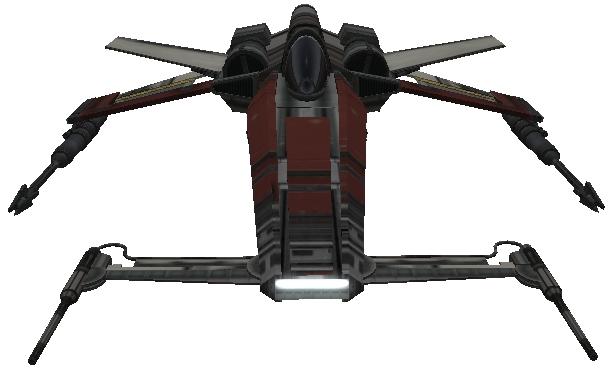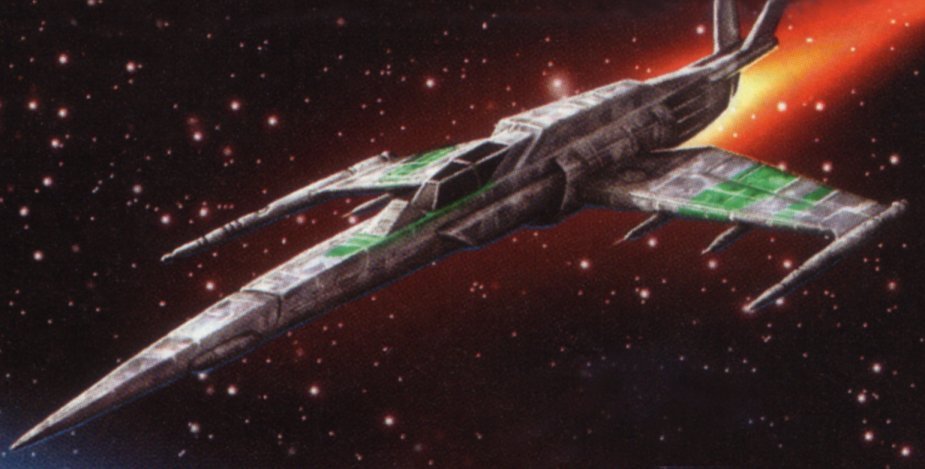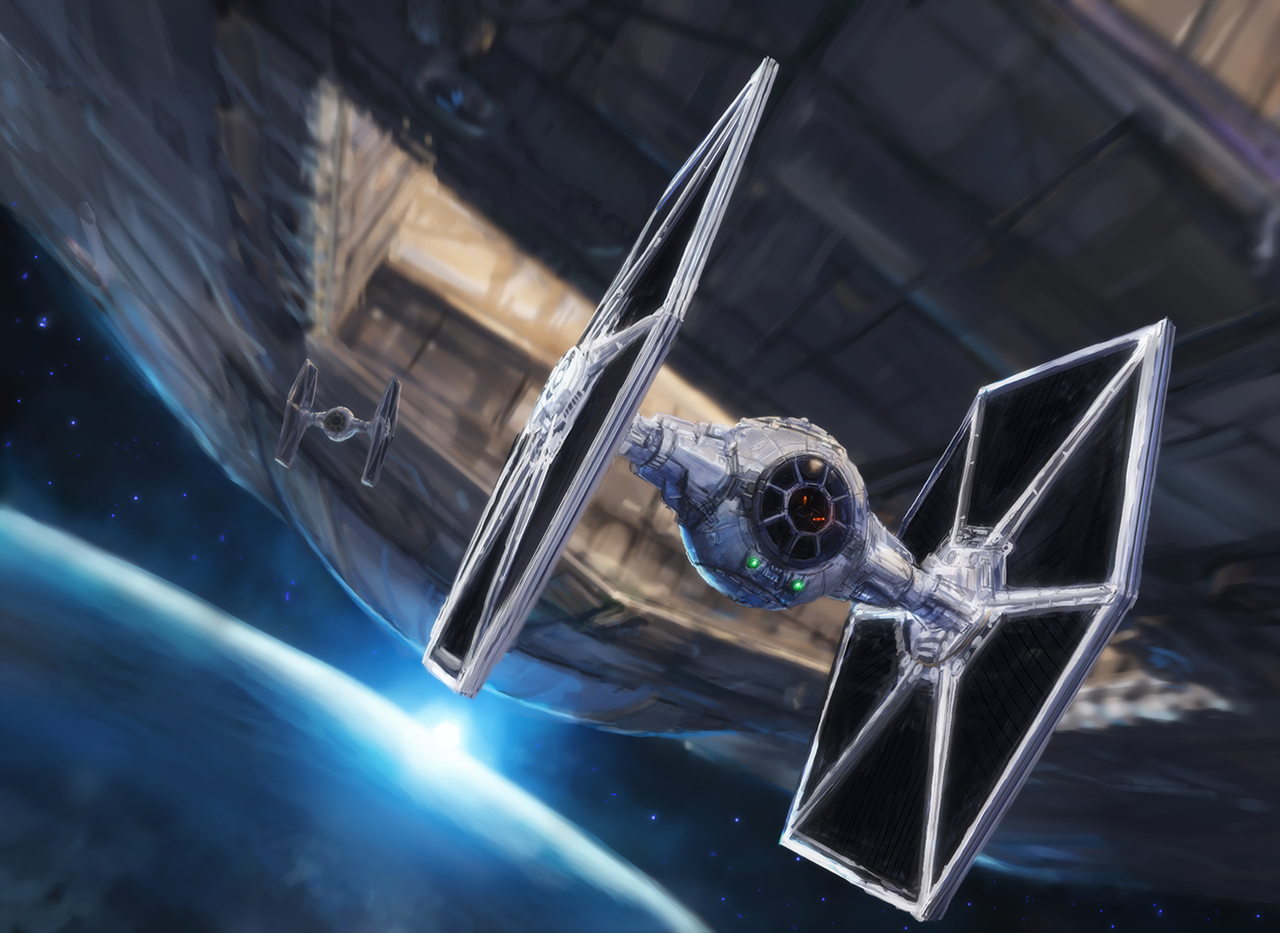Welcome to the tenth of 12 articles revealing – for the first time ever — material cut from The Essential Guide to Warfare before its April 2012 publication. Each section will be preceded by brief comments discussing why the material wound up on the cutting-room floor.
TIE FIGHTER TRAINING
'The Aurek-class tactical strikefighter was the primary Republic starfighter. It was a 9.2 meter-long delta-shaped starfighter armed with two heavy laser cannons and two proton torpedo launchers. The fighter was capable of considerable acceleration and maneuvering, and had variable-geometry wings. The Aurek fighter was a delta-shaped light starfighter armed with two laser cannons. The fighter was capable of considerable acceleration and maneuvering, and had variable-geometry wings. Aurek fighters were used by the Republic during the Mandalorian Wars, the Jedi Civil War, the First Jedi. The following is a list of science-fictional Star Wars starfighters. Within the Star Wars setting, a starfighter is defined as a 'small, fast, manevuerable, and heavily armed starship used in direct confrontations between oppsing forces.' In addition to appearing in the saga's movies and TV series, several LucasArts games depict the player as a starfighter pilot.
Jason Fry: The idea that TIEs are mass-produced, unshielded, and largely disposable is an old one in Legends, and to be honest it’s always struck me as odd. Even for a callous, unforgiving Empire, a capable veteran starfighter pilot seems like too valuable a commodity to risk losing because of a lucky shot or a chance encounter with a space rock. It wasn’t my place to challenge a well-established bit of lore, though, so I tried to trace the TIE’s origins back to clones and their being treated essentially as living droids. I think I did an OK job with that, but the results still felt like a bit of throat-clearing.
Erich Schoeneweiss: The merits of the Empire’s military philosophy could be a panel discussion, or part of one, at Celebration Anaheim. There are so many interesting things and topics for discussion brought up in this piece, which is yet another one Jason cut before sending the manuscript to me. I don’t think it would have made it into the book as is, but I might have Frankensteined portions of it into other sections. Glad I got to read this, and love “ground-hogs” and “vac-heads.” I want to see one of their donnybrooks now.
The TIE fighter simultaneously symbolized the New Order’s technological might and its callous disregard for its own soldiers. The men and women who flew TIEs were feted as the galaxy’s greatest pilots, yet the Empire consistently resisted the idea of offering such valuable pilots better protection in battle.
That philosophy had its roots in the Clone Wars: The first generations of TIE pilots were clones, and growing and flash-training new clone pilots was cheaper than improving the starfighters they flew. As non-clones entered the Starfighter Corps in larger numbers, some Imperial officers campaigned for more-durable starfighters. But TIE pilots themselves rarely took up the cause. They regarded the minimalist TIE as a twisted compliment paid to their abilities, rather than evidence of the Empire’s disregard for their lives.

Non-clone pilots who passed the rigorous screening and selection process required for flight training typically spent a year at one of the Empire’s flight schools, variously based on capital ships, planets or asteroid bases. There, a trainee pilot would be assigned to a partner and learn to operate as a team in combat through hundreds of hours of flight drills.
Flight-school drills were anything but safe: Attrition was high, particularly after trainee pilots were assigned to actual combat missions. Those who proved themselves in battle moved closer to a commission in the Starfighter Corps; those who didn’t died.
A typical Star Destroyer wing was divided into six TIE squadrons of 12 fighters each. Each squadron was divided into three flights of four fighters; each flight consisted of two elements; and each element contained a leader and a wingman. During typical operations, two TIE squadrons provided screening for their Star Destroyer and any escort vessels, two conducted forward recon, and two were held in reserve. TIEs assigned to ground operations were Navy vessels, but their pilots reported to an Army garrison commander. The rivalry between ground- and space-based pilots was legendary, and cantina owners learned the hard way to keep “ground-hogs” and “vac-heads” separated.
TIE fighters lacked life-support systems, forcing pilots to wear spacesuits. Inside the cockpit, the pilot’s feet operated the TIE’s control yokes and hands gripped the control rods, all while strapped into a shock couch and crash webbing. Most people regarded a TIE cockpit as cramped, even claustrophobic. But to the Empire’s best pilots, there was no place in the galaxy that compared.
ACES OF THE EMPIRE: THE 181ST IMPERIAL FIGHTER GROUP
Paul Urquhart: This piece is another example of how we tried to write for as wide a readership as possible. For readers who’ve never heard of the 181st Fighter Group, it’s intended to work as straightforward Imperial propaganda, introducing some characters, and hopefully getting the audience interested in the bigger story behind them. Readers who do know who the 181st will hopefully smile at references to everything from Bantam-era novels to online RPG modules, and enjoy the addition of some new characters and details. And for the really involved reader, there are some incredibly obscure and complicated continuity connections being made. There’s also a stubborn homage to one of my own dumber ideas — “Kyprianus von Urron zu Hoth” was my original suggestion for Lord Hoth’s birth-name.
Erich Schoeneweiss: I might have found room for this. Take a look at Bruno Werneck’s amazing illustration featuring the 181st at the Battle of Brentaal. It’s in the book and would have been a nice sidebar to this.
This week, “Aces of the Empire” takes a look at a unit that needs no introduction – the famous 181st!

Turn pdf in jpeg. Today on Imperial Center, a rare appearance by our Emperor—at a special ceremony of commendation for the officers of the 181st Imperial Fighter Group!
They won their spurs three years ago by liberating Ord Biniir from rebel revolutionaries, exacting revenge for the seditionists’ murder of Grand Moff Tarkin. Now, assigned to the Super Star Destroyer Executor, they have won key victories at Derra and Hoth!
Today, the 181st is our best TIE fighter unit—every pilot is a double ace and by special dispensation, they wear a special flight uniform with distinctive red flashing. They also paint their wings with red bloodstripes. But just a nanosecond, boys – looks like you need to get out some fresh paint. Because the industrious folks of Sienar Fleet Systems have a new delivery for the 181st Crusader kings 2 vassalsncpro. – new TIE interceptors, the most-advanced fighters in the Imperial Starfleet.
Some say they need no introduction, but let’s meet the pilots of the 181st’s Aurek Flight!
Colonel Soontir Fel is called the Empire’s greatest fighter pilot by many, and has a long record of brave service to attest to his value to the New Order. Colonel Fel earned his reputation in Yushan sector, defending local primitives against the Kopa Khan cultists. He then commanded a heavy cruiser against the Hutts – but Soontir knew the cockpit was the place for him, and he’s been there ever since! Colonel Fel still loves to fly, leading his men from the front—but when he gets shore leave, the other members of the 181st are on their own. That’s because Soontir now squires Wynssa Starflare, the Orman-nominated star of Light the Sky on Fire and Hitchhiker. Not bad for a farmboy from the back country of Corellia!
Commander Turr Phennir was born in the Valahari Provinces and raised by his stepfather, the renowned hunting pilot Count Phennir. His brother “Chaser” Cartha flew in the elite 61st Squadron at Yavin. But in spite of his aristocratic background, Colonel Fel’s wingman respects only one rank — the one you earn through your skill as a pilot! That’s why young Turr turned down a spot in the 61st to join the 181st—here, what matters isn’t where you come from or how many credits your family has in their accounts, but how many enemies of the New Order you shoot down!
Why is our next pilot wearing a helmet in a pressurized hangar? Just wait – that’s right, there’s a woman underneath that plastoid face! Flight Captain Myrette Davani will tell you not to be surprised — female TIE pilots are serving the New Order in increasing numbers, and often outperforming their male wingmates in combat. Certainly Rette is one of the very best – the daughter of a Clone Wars veteran from Beheboth, she won a flight scholarship to Coruscant’s top military prep academy, and graduated salutorian from the Naval Academy two years ago. After a year with the 722nd “Copperheads” and a stint in fighter ops aboard the Attaintor, she’s now the 181st’s newest squadron leader, leading the 1/181st and flying as third stick in Fel’s own flight.
Technical Lt. Makkor von Urron was a double TIE ace by age 18, racking up 11 kills against insurgent Y-wings around Oovri II before a lucky shot took out his knee and put him out of action. He retrained for Fleet Support while he learned to walk again, and Technical Services Officer Brandei of the Executor handpicked him to lead the 54 repair techs serving Fel’s unit—in the 181st, even the deck chief wears an ace’s bloodstripes! Pixma mp280 driver downloadwestcoastfree. But Mak wasn’t allowed to enjoy his retirement for long. The Baron and Captain Davani got him back in the cockpit within weeks, re-authorizing him for flight duty to fill the empty fourth slot in the elite First Flight—and he’s now one kill short of his third “ace’s five”!
A SOLDIER’S STORY: THE BLAST SHIELD
Jason Fry: “With the blast shield down I can’t even see – how am I supposed to fight?” Luke asks Obi-Wan that question in A New Hope, and I always thought it was a good one: What’s the point of a blast shield you can’t see through? With Warfare in progress, I convened a bunch of Star Wars fans after a panel at Celebration VI to come up with an answer. We repaired to the Hoth Bar, where I annoyed everyone by refusing to consider easy outs such as there being a HUD inside the shield. Fast-forward a few minutes and we did a collective double-take when a fan wearing a Luke costume complete with helmet and blast shield walked in and bemusedly allowed us to borrow his helmet and geek out over it. (Thanks to Art Love of the Rebel Legion for one of the most fortuitous arrivals in Essential Guide history!) It hurt to cut this one, but with word count at a premium I concluded it was an awful lot of verbiage to spend on something of interest only to hardcore fans.

Erich Schoeneweiss: I see what you’ve done here, clever man — nice little touch at the end. It might have been enough to make the final cut. More likely though, I would have suggested we simply add a sentence or two explaining the need for the blast shield to the Armory and Sensor Profile that featured the Z-95.
You know the problem with those Z-95s? They’re so tough they give the higher-ups bad ideas. Back in the Clone Wars, the Seppies captured Ongary IX, looking for hfredium. They took over the mines and converted the central shafts into starfighter bases, with hot and cold running Vulture droids pouring out at dusk and dawn to make trouble.
I was a pilot in the Ividal Sector Forces — Foxfire Squadron — when the Republic came calling. They had ground troops, but they needed their fighter squadrons over at Uvadala, so they came our way looking for dirt flyers. It sounded fine to me at first — smack some tinnies around and show the brass on Coruscant that us natural-borns could fight too. I didn’t know they planned to turn our Headhunters into bombers. They tricked the birds out with burrowing plasma charges — two-stage missiles from Arakyd. First came a plasma warhead that made a crater, then a shaped charge that arrowed into the hole it had made. I swear you could drill through a moon with the things.
The problem was the plasma warhead was bright. Brighter than the weapon docs had figured, I guess. First hop we ran with them, my wingman Jens’s blast visor completely polarized from the flash; he angled his bird straight into the deck while trying to get his helmet off. Second hop, Rafana was flying lead, wearing that fancy bucket of his with the integrated HUD. The flash scrambled the HUD, filling his vision with random characters, and he got stitched by a Vulture.
A day before the third hop, they collected our helmets and brought them back with blast shields you could flip down over your face. I’d like to meet the glit-biter that put these things together — the shield was huge, and when I flipped it down the hinge practically pushed the bridge of my nose back into my skull. They told us to keep the blast shield up until it was time to fire the charges, snap it down, then pop it back up when the flash had dissipated. They said next hop they’d wire a HUD in there, but for now it was just plastoid.
I should have lit out right there, but I wanted to show them Jorn Kulish didn’t scare. So I took the helmet they’d ruined and got in my Z – never mind that I looked like a reed-goose with that shield sticking straight out from my head, or that the thing kept bumping into the canopy during preflight.
We got our targets, fought through a screen of Vultures, fired our warheads and then slapped the blast shields down. It’s pitch black and I’m flying a Z-95 Headhunter 30 meters off the deck through a furball, but seeing’s overrated, right? It was eight seconds before the warheads vectored in and I saw the flashes leaking around the shield. Eight seconds of complete blindness.
It felt like eight hours.
And then I couldn’t get the blast shield back up — the thing was stuck. And so, yeah, I panicked. Can you blame me? The Z-95’s yawing while I’m trying to get the thing off, looking like a frog-dog with its head in a bucket. After 10 or 15 seconds I finally got the chin strap loose and yanked my helmet off, just in time to see a kriffing mountain going by two meters to starboard.
Star Wars Fighters List
Because my commo gear had come off with my helmet, it took me 20 minutes to figure out we’d imploded the mine, bringing the Seppies’ whole base down on top of them. The next day they loaded our Zs on a Venator headed back to Ividal. But I’d already decided I wasn’t getting back in the cockpit, not after that. Instead I got my duffel and grabbed a ride Coreward with these two scruffy-looking Republic agents aboard a YT-1300. The Stellar Envoy, they called her – and she was faster than a nerf being chased with a frying pan.
It was only when I’d disembarked on Denon that I realized I’d left my helmet aboard — I’d brought it out to show Jadak and Reeze why I quit. Maybe one of those barves found a use for it, though I can’t imagine what that might be. With the blast shield down you can’t even see – how are you supposed to fly?
Star Wars Aurek Fighter

Star Wars Aurek Fighter Squadrons
Star Wars: The Essential Guide to Warfareis the definitive guide to the ultimate intergalactic battlefield. Packed with original full-color artwork, it includes facts, figures, and fascinating backstories of major clashes and combatants in the vast Star Wars universe.
